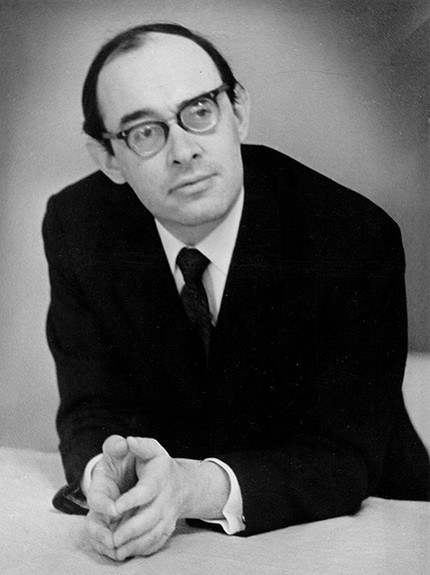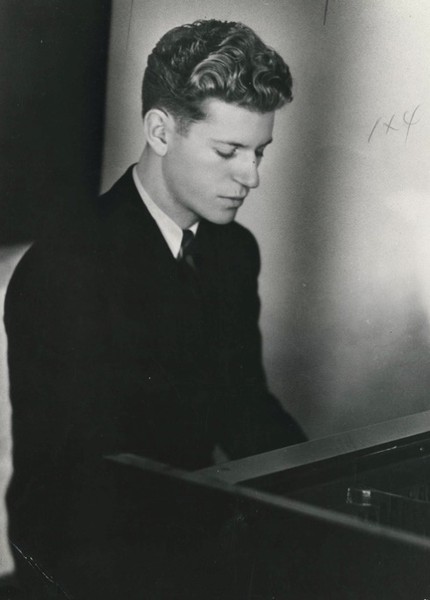
Dmitry Blagoy |
Dmitry Blagoy

In the spring of 1972, one of the posters of the Moscow Philharmonic read: “Dmitry Blagoy plays and tells.” For a young audience, the pianist performed and commented on Tchaikovsky’s Children’s Album and the Album of Pieces for Children. G. Sviridova. In the future, the original initiative was developed. The orbit of “conversations at the piano” included the work of many authors, including Soviet composers R. Shchedrin, K. Khachaturian and others. This is how a 3-year cycle of matinees developed, in which different facets of the artistic image of Blagoy, a pianist and musicologist, teacher and publicist, found organic application. “Communication with the audience in a dual role,” Blagoy said, “gives me a lot as a musician and artist. Synthetic activity enriches the comprehension of what is performed, unfetters fantasy, imagination.
For those who followed the creative life of the Good, such an unusual undertaking was not a complete surprise. After all, even at the dawn of his artistic career, he attracted listeners with a non-standard approach to programming. Of course, he also performed the usual works of the concert repertoire: Beethoven, Schubert, Liszt, Schumann, Chopin, Scriabin, Rachmaninov, Prokofiev. However, almost in the first independent clavirabend he played D. Kabalevsky’s Third Sonata, N. Peiko’s Ballad, G. Galynin’s plays. Premieres or openings of rarely played music continued to accompany Blagoy’s performances. Of particular interest were the thematic programs of the 70s – “Russian Variations of the XVIII-XX centuries” (works by I. Khandoshkin, A. Zhilin, M. Glinka, A. Gurilev, A. Lyadov, P. Tchaikovsky, S. Rachmaninov, N. Myaskovsky, and finally, Variations on the Karelian-Finnish Theme of Blagogo himself), “Piano Miniatures by Russian Composers”, where, along with the music of Rachmaninoff and Scriabin, pieces by Glinka, Balakirev, Mussorgsky, Tchaikovsky, A. Rubinstein, Lyadov sounded; the monographic evening was devoted to the work of Tchaikovsky.
In all these diverse programs, the best features of the musician’s creative image were revealed. “The pianist’s artistic individuality,” emphasized P. Viktorov in one of his reviews, “is especially close to the piano miniature genre. Possessing a pronounced lyrical talent, in the brief moments of a small, unpretentious, at first glance, play, he can not only convey the richness of emotional content, but also reveal its serious and deep meaning. Blagoy’s merits in familiarizing a wide audience with Rachmaninoff’s youthful works should be especially emphasized, which expanded our understanding of the work of an outstanding artist. Commenting on his Rachmaninov program in 1978, the pianist noted; “To show the growth of the talent of one of the greatest Russian composers, to compare several of his early compositions, which were still unknown to the listeners, with those that had long been called upon – such was my plan for the new program.”
In this way. Blagoy brought to life a significant layer of domestic piano literature. “His performing individuality is interesting, he has a subtle musical intellect,” wrote N. Fishman in the Soviet Music magazine. experienced during the game. This is one of the reasons for its profound impact on the audience.”
The pianist often included his own compositions in his programs. Among his piano opuses are Sonata Tale (1958), Variations on a Russian Folk Theme (1960), Brilliant Capriccio (with orchestra. 1960), Preludes (1962), Album of Pieces (1969-1971), Four Moods (1971) and others. In concerts, he often accompanied singers performing his romances.
The versatility of the outlook and the activities of the Blagogoy can also be judged by dry, so to speak, personal data. After graduating from the Moscow Conservatory in piano with A. B. Goldenweiser (1954) and in composition with Yu. received the title of Associate Professor). From 1957, Blagoy actively acted as a music critic in the magazines “Soviet Music” and “Musical Life”, in the newspaper “Soviet Culture”, published articles on performance and pedagogy in various collections. He was the author of the study “Etudes of Scriabin” (M., 1958), under his editorship the book “A. B. Goldenweiser. 1959 Beethoven Sonatas (Moscow, 1968) and the collection A. B. Goldenweiser ”(M., 1957). In 1963, Blagoy defended his thesis for the title of Candidate of Art History.
Grigoriev L., Platek Ya.





